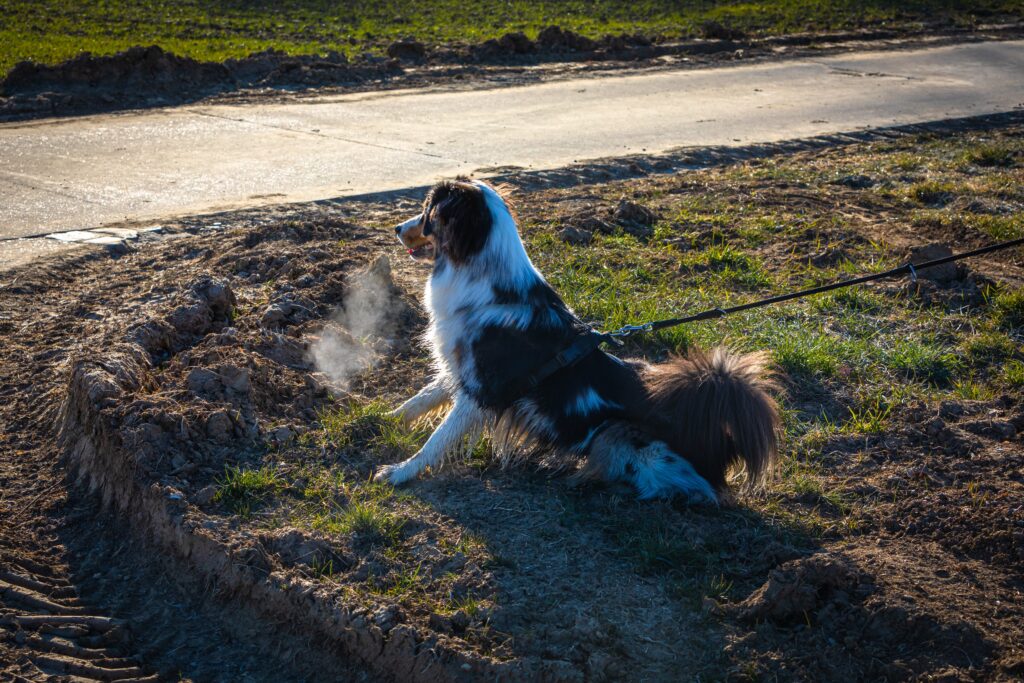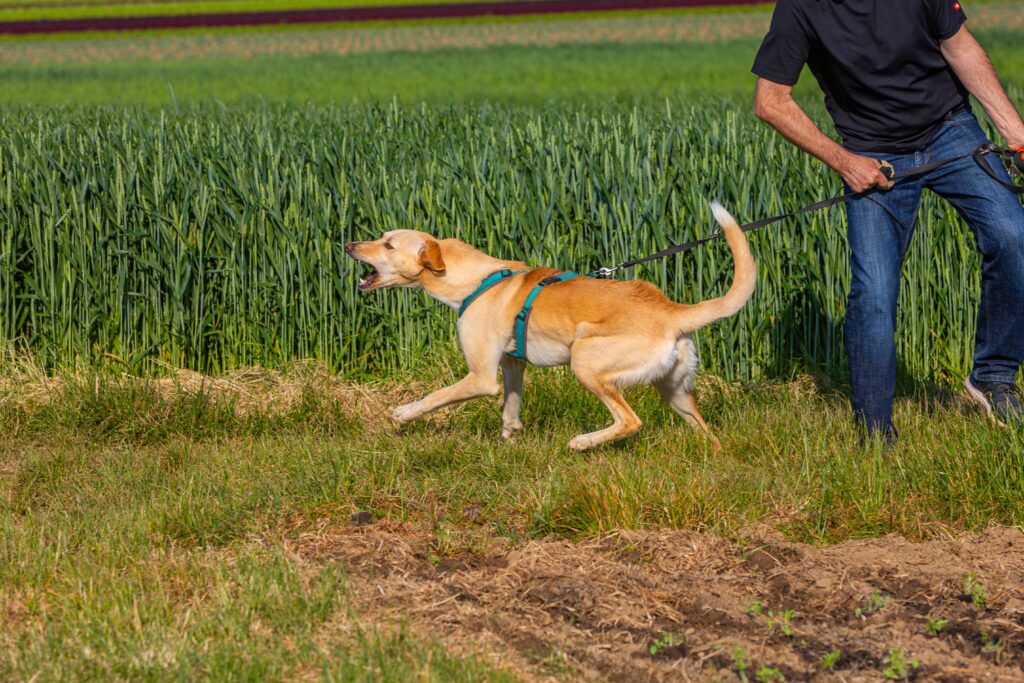The Super Guide to Desensitizing Your Dog
Does this scene sound familiar? You’re enjoying a walk on a beautiful Colorado day, but your eyes are scanning the horizon, not for the mountain views, but for other dogs. The moment you spot one, your stomach tightens. Your dog, who was just sniffing happily, is now rigid, fixated, and about to erupt into a frenzy of barking and lunging. Or maybe it’s the doorbell that turns your home into chaos, or a distant rumble of thunder that sends your best friend into a state of trembling fear.
Living with a reactive or fearful dog is stressful for everyone involved. You feel embarrassed, isolated, and helpless. More importantly, your dog is living in a state of anxiety, seeing threats around every corner. The good news is that there is a kind, effective, and science-backed solution: the process of desensitizing your dog. This is the key to helping your dog overcome their fears, build confidence, and restore peace to your life together.
What Do “Desensitizing Your Dog” and “Counter-Conditioning” Mean, Anyways?
Before we dive into the “how-to,” it’s important to understand the two powerful concepts that make this process work: desensitizing your dog and counter-conditioning your dog. They are a team, and you need both for true, lasting success.
Desensitization is the process of gradually exposing your dog to a trigger at a very low intensity—an intensity so low that they don’t have their usual fearful or reactive response. By controlling the exposure, you prevent the panic and allow their brain to start processing the trigger without freaking out.
Counter-conditioning is the secret ingredient that changes the whole recipe. This is where we actively change your dog’s emotional response. We pair the low-level trigger with something your dog absolutely loves (like delicious, high-value treats). The goal is to change their association from “Oh no, that scary thing!” to “Oh wow, that thing makes chicken appear! I love that thing!”
It’s crucial to distinguish this careful process from “flooding.” Flooding is forcing a dog into a scary situation, and hoping they “get over it.” Don’t do this! This is incredibly dangerous, shatters a dog’s trust, and almost always makes the fear significantly worse. While knowing how to socialize your dog properly involves creating positive new experiences, desensitization is a specific therapeutic process for methodically overcoming existing fears.

Common Triggers That Require Desensitization
While every dog is an individual, many common triggers can cause fear, anxiety, or reactivity. Identifying what sets your dog off is the very first step. It could be something on this list, or something completely unique to your pup.
- Other dogs are seen on a walk, from a window, or behind a fence.
- Specific noises, like the doorbell, knocking, the vacuum cleaner, the garbage truck, fireworks, or thunder.
- People, such as strangers approaching on a walk, children, or people wearing hats, sunglasses, or bulky coats.
- Household objects, including the dreaded vacuum, the broom, lawnmowers, or even new furniture.
- Handling and Grooming, such as nail trims, brushing, baths, or veterinary exams.
- Specific anxieties, like rescue dog separation anxiety, occur when you prepare to leave the house.
- Big life changes, such as introducing your dog to a new baby, and all the new sights and sounds that come with it.
7 Key Steps for Desensitizing Your Dog
Ready to start building your dog’s confidence? Follow these steps carefully and patiently. This process is a marathon, not a sprint, and consistency is your key to success when it comes to desensitizing your dog.
1. Identify the Exact Trigger and Find the Threshold
First, you need to know exactly what triggers your dog and, more importantly, at what distance or intensity their reaction starts. This starting point is the “threshold.” For example, if your dog barks at other dogs from 50 feet away, their threshold is 50 feet. Your training must begin further away than that, say at 75 or 100 feet, where they can see the other dog but aren’t reacting.
2. Prepare Your High-Value Rewards
Your dog’s everyday kibble won’t cut it here. Counter-conditioning requires something truly special to change their brain chemistry. Think five-star restaurant for your dog: tiny pieces of boiled chicken, cheese, steak, freeze-dried liver, or whatever they go absolutely wild for.
3. Start Below Threshold and Keep Sessions Short
With your high-value treats ready, begin your first session at a safe distance where your dog is not reacting. The goal is to keep the entire session “sub-threshold.” Keep it incredibly short and positive—just one to five minutes is perfect to start. We want to end the session before they have a chance to get stressed.
4. Master the “Look and Treat” Game
This is where the magic happens. From your safe distance, the moment your dog’s eyes land on their trigger, cheerfully say “Yes!” and immediately give them a high-value treat. Don’t wait for them to react. We are marking the instant they notice the trigger. After they eat the treat, they will likely look back at the trigger again. The moment they do, “Yes!” and treat again. The goal is for your dog to see the trigger and automatically look back at you, thinking, “Where’s my chicken?”
5. Gradually Decrease the Distance or Increase the Intensity
This is the “desensitization” part of the process. Over many sessions, you will very slowly decrease the distance between your dog and the trigger. We’re talking inches, not feet. If at any point your dog reacts (stiffens, barks, lunges), you’ve moved too fast. No worries! Simply increase the distance again to where they were last successful and work there a bit longer before trying to move closer again.
6. Putting it Into Practice: Common Scenarios
6.1 How to desensitize your dog to other dogs:
Find a park or quiet neighborhood street where you can maintain a large distance. The moment a dog appears far away, start the “Look and Treat” game. As the other dog passes and moves further away, you stop the treats. The lesson: The presence of the other dog makes good things happen.
6.2 How to desensitize your dog to barking:
This is a perfect scenario to practice at home. Find a video of a dog barking on YouTube. Play it at a barely audible volume—so quiet you can hardly hear it. As it plays, give your dog treats or play a fun game. Over many days, you can slowly increase the volume by one notch at a time, always pairing it with something positive.
6.3 How to desensitize your dog to loud noises:
For predictable noises like fireworks or thunderstorms, you can use the same recording technique as above. Play the sounds very quietly while your dog is relaxed or eating, gradually increasing the intensity over time. For sudden noises like a dropped pan, you can play the “Uh Oh!” game: anytime a loud noise happens, cheerfully say “Uh oh!” and toss a handful of tasty treats on the floor. Your dog will learn that scary sounds predict a fun scavenger hunt.
7. Know When to Ask for Professional Help
If you’re feeling overwhelmed, your dog’s reactivity is severe, or there’s any risk of aggression, the safest and most effective step is to contact a certified professional dog trainer. We can help you create a safe, structured plan and provide the guidance you need.
{pop out slider featuring all 3 dog training programs with header “Our Board and Train Programs}
How Can a Board and Train Program Help with Desensitization?
For many owners in Colorado dealing with significant reactivity, a board and train program can be a game-changer. It provides an immersive, controlled environment that is perfectly designed for effective desensitization and counter-conditioning. The primary benefits include:
- A Perfectly Controlled Environment: We can meticulously manage the distance and intensity of triggers, ensuring your dog is always kept sub-threshold for optimal learning.
- Expert Timing & Consistency: Our professional trainers have the experience to read a dog’s subtle body language and progress at the perfect pace, ensuring every session is productive and positive.
- 24/7 Management: A board and train program prevents your dog from “practicing” their reactive behavior, which often happens in a home environment. This consistency accelerates learning.
- Safety: For severe cases of reactivity or aggression, working with a professional is the safest option for you, your dog, and the public.
Let BlackPaw Dog Training Help Bond You and Your Pup Even Closer
Working through your dog’s fears with desensitization is one of the most powerful ways to build trust, communication, and a deeper bond. You’re not just stopping bad behavior; you’re helping your dog feel safe and confident in the world.
If you’re in the greater Denver and Boulder area and ready to transform your dog’s fear into confidence, we’re here to help. Contact the professional trainers at BlackPaw Dog Training to learn more about desensitizing your dog today!

